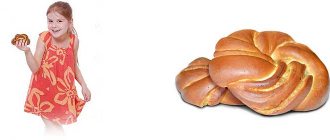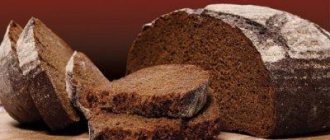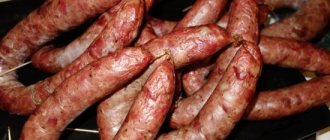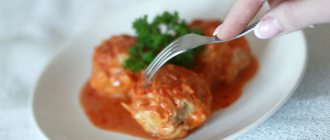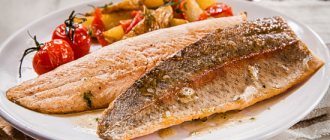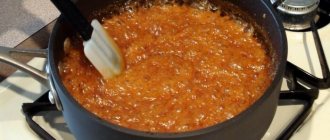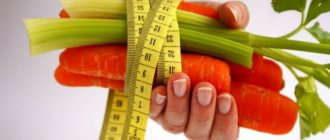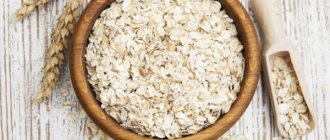Butter buns
These are considered the most popular delicacies. They are prepared with poppy seeds, raisins, and other fillings and sprinkles. The products contain some vitamins and minerals. The calorie content of a bun with poppy seeds is 335 kcal per 100 g of product. Such baked goods contain proteins (7.7 g), fats (10.9 g) and carbohydrates (51.7 g). The calorie content of a bun with poppy seeds is quite high, but this snack is filling and tasty.
Baking has been prepared in Russia since ancient times. Vanilla, cinnamon, and almond essences were added to these baked goods. The dough is prepared by adding milk, eggs and butter to the flour. It must rise more than 2 times for the buns to be fluffy. Calorie content is approximately 339 kcal, although here, again, everything depends on the amount of certain ingredients.
To prevent such delicacies from affecting your figure, you can consume no more than 100-200 grams of the product per day. It is important to reduce the amount of other baked goods, such as bread and pasta. When losing weight, it is better to avoid such foods altogether, since it is unlikely that you will be able to lose excess weight. This is due to the high content of carbohydrates, which increases the volume of subcutaneous fat deposits.
Calorie content of a bun with jam. Chemical composition and nutritional value.
Nutritional value and chemical composition of “bun with jam”.
| Nutrient | Quantity | Norm** | % of the norm in 100 g | % of the norm in 100 kcal | 100% normal |
| Calorie content | 312.9 kcal | 1684 kcal | 18.6% | 5.9% | 538 g |
| Squirrels | 7.4 g | 76 g | 9.7% | 3.1% | 1027 g |
| Fats | 7.4 g | 56 g | 13.2% | 4.2% | 757 g |
| Carbohydrates | 53.1 g | 219 g | 24.2% | 7.7% | 412 g |
The energy value of a bun with jam is 312.9 kcal.
Primary Source: Created in the application by the user. Read more.
** This table shows the average levels of vitamins and minerals for an adult. If you want to know the norms taking into account your gender, age and other factors, then use the “My Healthy Diet” application.
Source
Types of buns
The calorie content of the product can be reduced if you do not use yeast. For example, you can make baked goods from puff pastry. Buns made from yeast-free dough have a calorie content of about 172 kcal, although this figure depends on the components that will be added to the baked goods.
Products can be bran. In addition to wheat flour, sugar, salt, drinking water, they also add bran. Such products are even beneficial for the body. Moreover, the calorie content of a bun with bran is less - it is equal to 220 kcal. Such products are perfect for people who have digestive problems. They can be consumed instead of bread, and can also be used as a base for sandwiches and sandwiches.
Standard hot dog buns have 339 calories. This pastry has a long shape, but inside it is snow-white and fluffy. The baked goods are cut lengthwise, ketchup, mayonnaise, mustard (or other sauces) are applied and a sausage is placed inside. This is how a hot dog is prepared. The dough contains flour, milk, eggs, vegetable oil.
Calorie content is 320 kcal. The products are baked from dough based on wheat flour, water, yeast, butter, salt, and sugar. These products (100 g) contain proteins - 9.6 g, fats - 4.2 g, carbohydrates - 59.5 g. The bun is suitable for creating hamburgers. Just divide it in half and fill it with your favorite fillings.
Calorie content Bun with jam. Chemical composition and nutritional value.
Nutritional value and chemical composition of “Bun with jam”.
| Nutrient | Quantity | Norm** | % of the norm in 100 g | % of the norm in 100 kcal | 100% normal |
| Calorie content | 263 kcal | 1684 kcal | 15.6% | 5.9% | 640 g |
| Squirrels | 6 g | 76 g | 7.9% | 3% | 1267 g |
| Fats | 5 g | 56 g | 8.9% | 3.4% | 1120 g |
| Carbohydrates | 50 g | 219 g | 22.8% | 8.7% | 438 g |
The energy value of a bun with jam is 263 kcal.
Primary Source: Created in the application by the user. Read more.
** This table shows the average levels of vitamins and minerals for an adult. If you want to know the norms taking into account your gender, age and other factors, then use the “My Healthy Diet” application.
Source
Fillings and forms
Buns are prepared using different fillings. Jam, cottage cheese, cheese, potatoes, and cabbage are often used. The calorie content of the product depends on the filler. Buns can have different shapes:
- round;
- square;
- oblong;
- in the form of a braid;
- in the form of bagels;
Different doughs are used to make buns. One of them is puff pastry, which is quite difficult to prepare. Yeast dough is popular and is used to make confectionery products. The baked goods turn out fluffy and tasty.
Yeast dough can be sponged or unpaired. After kneading, chemical processes take place inside the mixture, due to which the dough grows and the buns become fluffy. A lot of butter or vegetable oil is usually not added to such a mixture, because of which the consistency becomes heavier and the fluffiness is eliminated.
Beneficial features
It is believed that baked goods are harmful to health. This is not entirely true, because baking contains vitamins and valuable substances. Of course, the vitamin and mineral composition can be different, because everything depends on the ingredients used during cooking.
Rye flour-based buns contain vitamins B and E, as well as other beneficial substances and minerals, including magnesium, phosphorus, iron, manganese, zinc, potassium and copper. The calorie content of this product is also low - about 149 kcal. The benefits from this product will be greater than from buns made from wheat flour.
Harm
Most people in our country love buns made from white wheat flour. But such products are contraindicated for obese people. Baking negatively affects digestion and figure. Excessive consumption of baked goods causes weight gain, which creates additional stress on the musculoskeletal system and cardiovascular system.
Still, buns are an excellent snack, especially if you need to quickly cope with hunger.
Most of us have a sweet tooth to one degree or another. Therefore, all sorts of goodies come to our table at different intervals: chocolate, caramel, ice cream, cookies and, of course, a variety of baked goods. Buns are especially popular among the latter. They differ in shape, size, smell, color, filling. But all buns are loved by both children and adults.
Many people with a sweet tooth know from their own experience how sweets affect their figure. It is not surprising that sooner or later they ask themselves the question: how often and in what quantities can they eat buns in order to pamper themselves and not gain extra pounds? Let's try to figure it out.
Buns are healthy
This bakery product has a high calorie content, hence the conclusion: consuming buns in unlimited quantities is harmful to health.
To prevent the delicacy from affecting your figure, you can consume no more than 100-120 grams of buns per day. At the same time, it is advisable to reduce the amount of other bakery products (bread, pasta, etc.) in your diet. In addition, it should be borne in mind that the calorie content of a jam bun is much lower than the calorie content of a cinnamon bun. That is, how many calories are in a bun, and therefore how much product you can eat, depends on its filling.
During the period of weight loss, it is advisable to completely avoid buns. The fact is that this product is rich in carbohydrates and fats, but practically does not contain protein, which contributes to an increase in fat mass rather than muscle mass.
But for those who suffer from a lack of dietary fats of plant and animal origin, microelements and vitamins, as well as people with poor nutrition, buns will be useful. The filling of the product is also of great importance. For example, cottage cheese contains essential amino acids and lactic acid bacteria, and is rich in calcium and phosphorus. Therefore, pregnant women, children, and people suffering from osteoporosis and disorders of the nervous system can treat themselves to a bun with cottage cheese.
Contraindications to eating high-calorie buns are: diabetes, acute diseases of the gastrointestinal tract, some kidney diseases, severe atherosclerosis, stroke and myocardial infarction.
Almost all buns are rich. They contain flour, yeast, butter, sugar, eggs, and in some cases milk. According to the standard, the amount of sugar and vegetable fats in a bun should be at least 7-8%.
This composition explains the high calorie content of the buns. On average, it is 295 kilocalories per 100 grams of product. If premium flour is used to prepare a bun, the calorie content of the product can reach 340 kcal per 100 grams of product.
How many calories in a bun also depends on its filling - we mentioned this above. Thus, the calorie content of a bun with poppy seeds - one of the most popular buns among children and adults - is 292-300 kcal per 100 grams of product. These products are often served for breakfast with butter. It must be remembered that when calculating the calorie content of such a breakfast, you should take into account not only the calorie content of the poppy seed bun, but also the calorie content of the butter.
The calorie content of a bun with jam is slightly lower - 245 kcal per 100 grams of product. But the rule that you can consume no more than 100-120 grams of these bakery products per day remains unchanged.
The calorie content of a cinnamon roll is 347 kcal per 100 grams of product. Perhaps these are the highest calorie buns. Therefore, it is advisable to pamper yourself with them as rarely as possible. And those who are on a diet should completely give up this sweetness for a while.
How much do buns cost (average price for 1 piece)?
Moscow and Moscow region.
Perhaps buns can be considered the most famous type of baked goods. Buns are a type of baked goods made from yeast dough, which is distinguished by its round shape. In the modern culinary tradition you can find hundreds of different recipes for buns. Professionals and true masters of culinary art call buns a universal food product that can be used in a variety of ways. For example, buns are served as an independent dessert or as an addition to soups.
Buns with jam
How to prepare the dish “Buns with jam”
- Knead the dough by mixing water, flour, yeast, sugar and salt. Let rise in a warm place for 30 minutes.
- Roll the dough into balls. It is better to make more balls, but smaller ones.
- Place on a greased baking sheet at a distance of 5 cm from each other.
- Flatten the balls slightly and make a hole inside each ball with a glass or a masher.
- Place jam in the cavity.
- Place in the oven. Do not preheat the oven, because... While it heats up, the buns rise better.
- Bake at 180 degrees for 40 minutes.
- Take out the rolls, sprinkle with water, brush with butter.
- Wheat flour - 250 gr.
- Apple jam - 150 gr.
- Butter - 20 gr.
- Vegetable oil - 2 tbsp.
- Water - 130 ml.
- Dry yeast - 1 tsp.
- Sugar - 1 tbsp.
- Salt - 0.5 tsp.
Nutritional value of the dish “Buns with jam” (per 100 grams):
Types of buns
A wide range of buns opens up great possibilities. Currently, there are a sufficient number of types of buns. From all the variety, the following and most popular types of buns can be distinguished:
- brioche bun or breakfast bread;
- or other sandwiches or sandwiches;
- marzipan;
- bun;
- buns with filling (fruit, fruit and berry, cottage cheese, etc.);
- buns topped with powdered sugar, nuts, poppy seeds, cinnamon, etc.;
- bun with raisins or dried fruits;
- bun.
It is worth noting that in addition to the above types of buns, there are also regional subtypes of baked goods, which, as a rule, are named after the place where the baked goods are made. For example, Bath buns or Sally Lunn buns. The buns acquired their original name thanks to the word boulangers, which began to be used to call French bakers. Previously, bakers baked not particularly tasty, or rather absolutely tasteless, unleavened bread. With the discovery of yeast, baking took a huge step forward.
Since the Middle Ages, the first round buns began to be made in Europe, which were sold by boulangers. Over time, bakers began to call the appetizing sweet product boules or buns. Types of buns differ not only in the composition of the initial ingredients used in the baking process of the baked goods. Some buns have earned love and recognition due to their distinctive shape or filling.
For example, a bagel or croissant bun is famous for its distinctive and unique shape, as well as its filling and taste. The calorie content of buns depends on many factors. The average caloric content of buns is 339 kcal per 100 grams of baked goods. However, these are only average indicators that may increase or decrease depending on the composition of the finished food product.
Viennese cinnamon bun
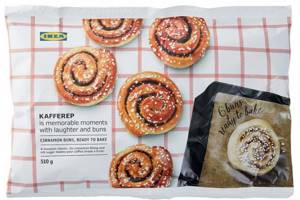
Denmark and Sweden are considered the birthplace of cinnamon rolls - it was in these countries that at the beginning of the 18th century they changed the traditional recipe for Viennese pastries by adding cinnamon to its composition. In Sweden, this sweet delicacy has become so popular that since October 4, 1999, the country has celebrated “Cinnamon Bun Day” every year, and the average Swede eats 316 of these buns a year (2).
It is thanks to the popularity of traditional cinnamon buns that Cinnabon coffee shops do not operate in Europe - here the brand is known exclusively to residents of Russia, Ukraine, Belarus, Greece and Poland. Note that the main difference between a regular cinnamon roll and a Cinnabon is the significantly increased size - and, accordingly, calorie content.
Cinnabon recipe - how is it baked?
In fact, the different variations of Cinnabon differ only in the topping (what each dessert is topped with), but the bun itself is always baked the same. Depending on whether caramel is used or not, the calorie content also changes. The main ingredients of such a bun are always refined sugar, white bread flour, butter and a little cinnamon.
At the same time, baking the bun itself for Sinabon is quite simple - first you take the sweet dough, then it is rolled out to a thickness of 0.5-0.7 cm, sprinkled with cinnamon and sugar and rolled into rolls for soaking in butter. After this, the workpiece is cut into portions and baked in the oven for about 30 minutes at 170 degrees Celsius. Finally, the bun can be topped with syrup.
The benefits of buns
The benefits of buns lie in the chemical composition of the bakery product, which is enriched with a sufficient amount of vitamins and beneficial natural compounds. Depending on the type of dough from which the buns are made, the vitamin and mineral composition of the final baked goods may vary. For example, buns made from wholemeal rye flour are a real storehouse of vitamins and beneficial compounds of natural origin. The calorie content of such a food product will be at a fairly low level, but a bun will bring many times more benefits to the human body than a bakery product made from wheat flour.
Harm of buns
However, low-calorie and healthier buns are not so wildly popular among the majority of residents of our latitudes. As a rule, we buy buns made from wheat flour in stores or bakeries. Such bakery products are contraindicated for obese people. First of all, the harm of buns affects your digestion, and then your figure. Uncontrolled consumption of any baked goods, including buns, will not just harm your figure, but cause significant damage to your health. There will be no harm from buns if you consume the culinary product in moderation.
Calorie content of buns 339 kcal
Energy value of buns (Ratio of proteins, fats, carbohydrates - bju):
: 7.9 g (~32 kcal) : 9.4 g (~85 kcal) : 55.5 g (~222 kcal)
Energy ratio (b|w|y): 9%|25%|65%
Many people believe that buns are a high-calorie product, therefore, while on a diet, they limit their consumption. However, the dough without and with sweet additives (poppy seeds, jam, glaze, chocolate and cottage cheese) is significantly different. The nutritional value of the product may vary depending on the ingredients.
WEIGHT LOSS STORIES OF STARS!
Irina Pegova shocked everyone with her weight loss recipe:
“I lost 27 kg and continue to lose weight, I just brew it at night...” Read more >>
There are several types of baked goods with different calorie content. The most high-calorie foods of all are butter products and hot dogs.
- Show all
Calorie content of buns with jam. Chemical composition and nutritional value.
Nutritional value and chemical composition of “Buns with jam”.
| Nutrient | Quantity | Norm** | % of the norm in 100 g | % of the norm in 100 kcal | 100% normal |
| Calorie content | 295.4 kcal | 1684 kcal | 17.5% | 5.9% | 570 g |
| Squirrels | 4.4 g | 76 g | 5.8% | 2% | 1727 g |
| Fats | 8.7 g | 56 g | 15.5% | 5.2% | 644 g |
| Carbohydrates | 51.1 g | 219 g | 23.3% | 7.9% | 429 g |
The energy value of the bun with jam is 295.4 kcal.
Primary Source: Created in the application by the user. Read more.
** This table shows the average levels of vitamins and minerals for an adult. If you want to know the norms taking into account your gender, age and other factors, then use the “My Healthy Diet” application.
Source
Calorie content of buns depending on type
One white bun contains 245 kcal and 9.48 g of protein, 1.83 fat and 46.58 g of carbohydrates.
The most common types of baked goods are:
butter;
Below is the calorie content per 100 grams. To find out how many calories are in one product, you need to weigh the product and enter the data into an online calculator.
Bran
This type of product contains fewer calories than others. Such products are made from the following ingredients:
- bran;
- wheat flour;
- salt;
- Sahara;
- purified water.
100 grams of this product contains 220 kcal. BJU: 7.8/1.8/43.9.
Butter
The category of these baked goods includes muffins with raisins, poppy seeds, buns with sugar, and puff pastry buns. They sometimes add cinnamon and vanilla to add flavor. The dough for their preparation contains a lot of butter, eggs and milk. To give a golden crust, the baked goods are greased with melted butter.
Products may contain jam, honey. 100 grams of product contains 339 kcal and the following BJU content: 7.9/9.4/55.5.
Capital
Such products contain a large amount of mineral components and vitamins. One white loaf eaten for lunch will replenish your iron requirement for the day. They include:
- purified water;
- margarine;
- white durum wheat flour;
- sugar;
- yeast;
- salt.
100 g contains 270 kcal. BJU: 8.4/2.2/52.8. Similar products are used for making sandwiches and sandwiches, but it should be remembered that adding jam, cheese and honey will increase the calorie content of the bun.
Eight grains
Such bakery products belong to the category of healthy food products. They are made from 8 types of flour and the same amount of cereals. In their composition you can find:
- brown flax seeds;
- extruded corn;
- wheat and soy flakes;
- buckwheat;
- sesame and other ingredients.
The product contains 277 kilocalories, BJU composition: 13.9/5.3/43.7.
Burgundian
The second name for products of this type is gougere, which translated means cheese pie. These buns are served in restaurants when ordering glasses of wine. The products taste creamy and airy. They are made from choux pastry with the addition of cheese.
The number of kcal in Burgundy buns is 266. Nutritional value is 0.7/1.7/55.
Sandwiches
Bakery sandwich products with the addition of sesame are made from the following components:
- premium wheat flour;
- baking improver;
- drinking water;
- Sahara;
- baker's yeast;
- salt;
- sunflower oil.
These buns cannot be stored for more than a day. 100 g of sesame products contain 320 kcal. BJU: 9.6/4.2/59.5.
For hamburgers
The chemical composition of buns includes sodium, phosphorus, iron and other equally important minerals. Hamburger baked goods are baked from the following ingredients:
- wheat flour;
- butter;
- milk;
100 g of product contains 272 kcal. Nutritional value of the product: 7/4/52 g.
For hot dogs
The hot dog product can be identified by its oblong shape. Buns are prepared from vegetable oil, milk, eggs, and wheat flour. The chemical composition is enriched with a large number of B vitamins, as well as:
- potassium;
- calcium;
- magnesium;
- retinol;
- nicotinic acid.
100 grams of product contains 339 kcal. The bun contains 8.7g protein, 7.5g fat and 60.6g carbohydrates.
Calorie content Butter bun with jam. Chemical composition and nutritional value.
Nutritional value and chemical composition of “Bun with jam”.
| Nutrient | Quantity | Norm** | % of the norm in 100 g | % of the norm in 100 kcal | 100% normal |
| Calorie content | 288 kcal | 1684 kcal | 17.1% | 5.9% | 585 g |
| Squirrels | 6.4 g | 76 g | 8.4% | 2.9% | 1188 g |
| Fats | 6.1 g | 56 g | 10.9% | 3.8% | 918 g |
| Carbohydrates | 51.9 g | 219 g | 23.7% | 8.2% | 422 g |
The energy value of a bun with jam is 288 kcal.
Primary Source: Created in the application by the user. Read more.
** This table shows the average levels of vitamins and minerals for an adult. If you want to know the norms taking into account your gender, age and other factors, then use the “My Healthy Diet” application.
Source
Buns with additives
There are certain types of buns with various additives. Their calorie content depends on additional ingredients:
Caloric content of foods may vary depending on what the manufacturer has added to them.
Most people love sweets, so various goodies often end up on the kitchen table. The most popular baked goods, and the leader are buns with poppy seeds, which children and adults often snack on. However, consuming this delicacy can negatively affect your slim figure.
.
The calorie content of a large poppy seed bun, which weighs approximately 100 grams, is about 310 kcal.
It contains
:
- 8.3 g fat;
- 12.4 gr. proteins;
- 61.2 gr. carbohydrates.
The bun, like any flour product, is rich in microelements, vitamins E and PP, niacin, thiamine and riboflavin. But everything is ruined by a large amount of empty carbohydrates
. Therefore, those who do not want to gain weight are not recommended to consume such baked goods.
Roll with jam calorie content
Nutritional value and chemical composition of “Roll with jam”.
| Nutrient | Quantity | Norm** | % of the norm in 100 g | % of the norm in 100 kcal | 100% normal |
| Calorie content | 295.7 kcal | 1684 kcal | 17.6% | 6% | 569 g |
| Squirrels | 6.55 g | 76 g | 8.6% | 2.9% | 1160 g |
| Fats | 5.95 g | 56 g | 10.6% | 3.6% | 941 g |
| Carbohydrates | 48.35 g | 219 g | 22.1% | 7.5% | 453 g |
The energy value of a bun with jam is 295.7 kcal.
Primary Source: Created in the application by the user. Read more.
** This table shows the average levels of vitamins and minerals for an adult. If you want to know the norms taking into account your gender, age and other factors, then use the “My Healthy Diet” application.
How to prepare the dish “Buns with jam”
- Knead the dough by mixing water, flour, yeast, sugar and salt. Let rise in a warm place for 30 minutes.
- Roll the dough into balls. It is better to make more balls, but smaller ones.
- Place on a greased baking sheet at a distance of 5 cm from each other.
- Flatten the balls slightly and make a hole inside each ball with a glass or a masher.
- Place jam in the cavity.
- Place in the oven. Do not preheat the oven, because... While it heats up, the buns rise better.
- Bake at 180 degrees for 40 minutes.
- Take out the rolls, sprinkle with water, brush with butter.
- Wheat flour - 250 gr.
- Apple jam - 150 gr.
- Butter - 20 gr.
- Vegetable oil - 2 tbsp.
- Water - 130 ml.
- Dry yeast - 1 tsp.
- Sugar - 1 tbsp.
- Salt - 0.5 tsp.
